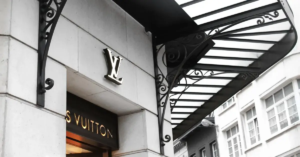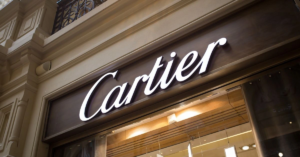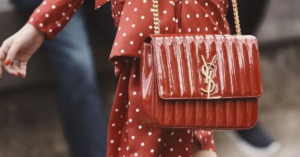Latest news on Tiffany’s price hike has caught everyone’s attention! As the elegant luxury brand constantly develops under LVMH’s reign, it’s making all the buzz. Ever since it was bought out for an astounding $15.8B in January 2021, Tiffany & Co. has been focused on reshaping its persona and enhancing its foothold in the luxury jewelry realm.
With this year’s price increase, several popular Tiffany collections have experienced significant changes in their retail prices. For example, some Tiffany Hardware pieces saw a 13% increase, while the Schlumberger collection witnessed the most important price increase. Such price adjustments could be attributed to various factors, including the enhanced luxury nature of these pieces and the brand’s overall strategy.
The Tiffany price increase affects high-end collections and more accessible items such as the Return to Tiffany beaded bracelet, which nearly doubled in price. This move sparks curiosity about the brand’s long-term plans, potential audience shifts, and the impact on consumer perceptions of Tiffany & Co.
Tiffany Price Increase
The fallout of the inflation caused by the COVID-19 pandemic still haunts the designer market. And surely enough, we’ve witnessed multiple price hikes from luxury brands within a short period, such as Chanel, Louis Vuitton, Yves Saint Laurent, and Tiffany.
Under its new ownership, Tiffany is setting its sights on reinventing a more refined image in the luxurious jewelry market—an understandable move given the increasing desire for Tiffany designer products among Gen Zs.
However, brand repositioning for these designer names often comes with price adjustments. Pair that with inflation and increasing costs, and you get a considerable price rise across the board.
This year alone, the luxury design house updated its popular collection prices more than once in January, June, and September.
For reference, Tiffany’s half-pave lock bracelet cost around $12,000 in the last quarter of 2022. But with the previous month’s hike, the same jewelry now costs $15,500—over $2,500 increase in less than a year.
The Schlumberger collection hit the brunt of the hike, with jewelry pieces almost doubling in price. Cost for lines like the Tiffany T and Hard Wear also increased by 5% to 10%, which is around $300 to $500 price difference from last year.
But here’s another ominous news for Tiffany shoppers:
As the year-end draws near, we’re looking at another speculated price increase, per Tiffany’s tradition. And experts suspect the hike will happen in winter between December 2023 and January 2024.
That said, the scope of the price hike is still yet to be known. However, judging from past increases, it’s safe to assume another 5% to 15% uptick for Tiffany’s leading collections.
Why Is Tiffany Increasing Their Price?
Luxury brands aren’t known for shying from price hikes. But what could be the reason behind this series of price surges from Tiffany?
Brand Refining and Repositioning
Exclusivity is the primary hallmark of luxury brands. Designer companies usually adjust their products’ value to maintain their items’ luxury status and symbol.
Under the leadership of CEO Anthony Ledru, experts expect Tiffany’s brand repositioning to result in three times price hikes every year. In short, we may see further surges in Tiffany’s designer items in the latter half of 2024.
Production and Distribution Cost
Well, the volatile market following the wake of the pandemic affected most industries. The disruptions across the global supply particularly impacted the production and distribution of luxury goods.
Designer brands like Tiffany frequently raise their prices to compensate for the cost of these economic challenges and maintain profit.
The Worth of Gold and Silver
Another reason for these price hikes could be the skyrocketing value of precious metals. The demand for gold and silver typically surges during high inflation rates as investors seek out assets immune to the detrimental effects of the decreased buying power of money.
This increase in precious metal demand naturally results in higher price tags for jewelry products, especially those in the luxurious market like Tiffany’s.
Driving Desirability by Upping Price
Designer and luxury brands usually make high-quality and timeless pieces of products. For this reason, innovations and large-scale changes in their creations are a rare occurrence.
However, the lack of fresh offerings usually results in disinterested consumers. To address this issue, designer brands raise prices to stir the market and boost desirability by manufacturing scarcity.
Consumer Reaction to Tiffany Price Hike

As expected, Tiffany’s consecutive hikes received considerable backlash from its consumers. Some patrons of the brand called the skyrocketing prices “unfair” and “unjustified.”
Still, driving the value of their products beyond the middle class’ financial capacity might be Tiffany’s strategy of pushing their brand on par with Cartier and Harry Winston.
Additionally, creating scarcity by upping prices ensures higher exclusivity. So, wealthy patrons might continue to buy Tiffany products for their perceived rarity.
Nevertheless, these frequent hikes will undoubtedly deter potential buyers with limited budgets. Some might look for better alternatives than spending an additional $300 to $500 on a single jewelry piece.
Rely on the Resale Market
In response to the price increases, Tiffany customers may turn toward the resale market to find affordable options. As such, we could soon be experiencing a surge in demand for pre-owned Tiffany jewelry.
One advantage of purchasing from pre-owned luxury platforms is the quality of their items. Most products listed in such shops retained much of their quality, some unworn or scarcely used by the previous owners.
Switch to Affordable Brands
Customers thinking Tiffany’s price raise is irrational could switch to cheaper brands as a recourse. Of course, there’s no shortage of luxurious alternatives to Tiffany, from Blue Nile’s high-quality yet reasonably-priced jewelry to James Allen’s affordable customized pieces.
Industry Reaction
The recent announcement of Tiffany & Co.’s price increase, ranging from 5% to even 13% on selected pieces, has sparked various reactions within the luxury industry. Some Tiffany Hardware pieces have seen a 13% increase, and the Tiffany & Co. Schlumberger collection has seen the largest price increase.
Brands like Hermès have also raised their prices by 5 to 10 percent, citing rising costs and currency fluctuations. As these luxury brands raise their prices, the question arises – how will this impact consumer demand?
In the face of higher costs and potential backlash from customers, it’s critical to understand the driving forces behind these increases in the market. The reasons for price increases might include maintaining earnings amid external forces such as inflation, increased production costs, or simply the desire to preserve an air of exclusivity associated with these high-end brands.
At the same time, it’s essential to recognize the strong demand for such premium products. Despite the proposed price hikes, luxury brands like Hermès have reported consistent customer interest.
What does this mean for the competitive landscape within the luxury goods sector? As brands continue to navigate the challenges of the current economic climate, it will be interesting to see how they adapt and evolve to maintain their appeal among discerning consumers. Will other companies follow suit and raise their prices, or will they opt for different strategies to stay competitive?
Industry professionals and customers alike will be keeping a close eye on how these pricing changes at Tiffany & Co. and other luxury brands unfold in the months ahead, as it will undoubtedly shape the future of the luxury market.
The Future Outlook of Tiffany

Despite the gloomy reception of luxury brands upscaling their price tags, Tiffany surprisingly maintained its profitable momentum. At the peak of its price increases in 2022, Tiffany’s sales grew to over €5.1 billion, almost rivaling Cartier’s €8.4 billion.
Now, the jewelry design house is gazing toward Asia and expanding its Chinese market, which is also its second largest. By 2025, experts estimate Tiffany’s expected sales to reach over €7.4 billion.
FAQ:

Has Tiffany increased prices?
Yes, Tiffany u0026amp; Co. increased its prices in January 2022, with some items going up anywhere from $250 to USD 1,350.
Do Tiffany prices ever go down?
Tiffany u0026amp; Co. does not have sales or clearance events, and its jewelry prices typically do not go down.
Is Tiffany Co overpriced?
Tiffany u0026amp; Co. jewelry is considered overpriced by some due to the high markup for the brand and luxury experience. Still, the quality of the jewelry is generally considered to be excellent.
Do Tiffany watches hold their value?
Tiffany watches are considered high-quality timepieces that hold their value well over time. However, some models, particularly quartz watches, may not hold their value as well as automatic watches.
Can you negotiate price with Tiffany?
Tiffany u0026amp; Co. does not negotiate on prices.
Why is Tiffany jewelry overpriced?

Tiffany u0026amp; Co. jewelry is considered overpriced due to the high markup for the brand and luxury experience. However, the quality of the jewelry is generally considered to be excellent.
Does Tiffany and Co have a good resale value?
Tiffany u0026amp; Co. jewelry is known to have a good resale value due to its timeless design, high quality, and ongoing demand. However, the resale value can drop significantly, sometimes to as low as 30-70% of the original purchase price.
How to save money at Tiffany?
You can save money at Tiffany u0026amp; Co. by purchasing pre-owned or vintage jewelry, selecting simpler designs, and avoiding customizations or engravings. Additionally, you can take advantage of sales tax holidays or use a cashback credit card for purchases.
Can I sell my Tiffany ring back to Tiffany?
Tiffany u0026amp; Co. has no buyback program, so you cannot sell your Tiffany ring back to the company. However, you can sell it to a pawn shop, jewelry store, or online marketplace.
u003cstrongu003eHow much is Tiffany markup?u003c/strongu003e
The markup for Tiffany u0026amp; Co. jewelry varies by product, but it is generally high due to the brand’s luxury image and high-quality materials. Some estimates suggest a markup of 300-400% over the cost of production.
Does Tiffany’s jewelry lose value?
Tiffany’s pieces of jewelry are known for their craftsmanship and creativity. Because of its global recognition, items from Tiffany retain much of their value when resold.u003cbru003eThat rising demand for Tiffany jewelry can also drive the resale price higher. So, depending on the item, you can expect Tiffany products to hold 70% to 100% of its retail value.
Which is more expensive, Cartier or Tiffany?
Cartier and Tiffany are two of the most high-end jewelry companies. However, Cartier’s products are generally higher in terms of pricing.u003cbru003eCartier’s reputation for supplying jewels to European families is one of the reasons for its higher worth. But Tiffany also uses more sterling silver for its products, while Cartier uses platinum, gold, and diamonds.
Is it cheaper to buy Tiffany in the USA?
Generally speaking, Tiffany jewelry is more affordable in the U.S. But it’s because the majority of its production happens within the country. But it’s worth noting that official prices can vary on factors like sales or u003ca href=u0022https://www.thebalancemoney.com/what-is-a-luxury-tax-5208103u0022u003eluxury taxu003c/au003e, which can vary from state to state.
Disclosure: We only recommend products we would use ourselves and all opinions expressed here are our own. This post may contain affiliate links that we may earn a small commission at no additional cost to you.
If you liked this blog article about the topic: Tiffany Price Increase, don’t forget to follow us on Pinterest so you don’t miss any more fashion and beauty news.





